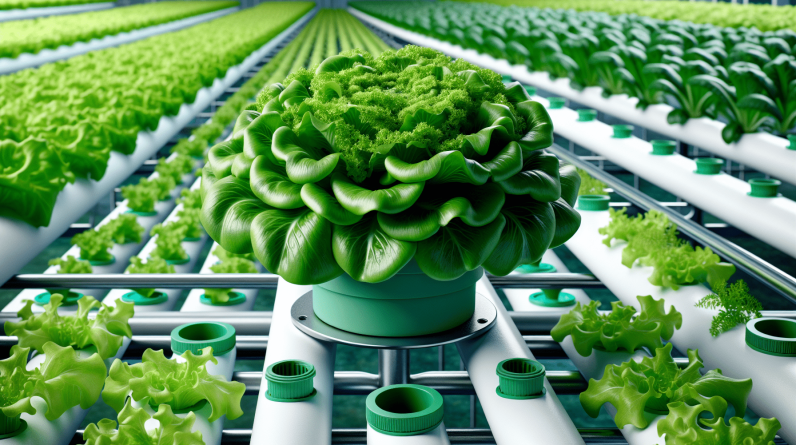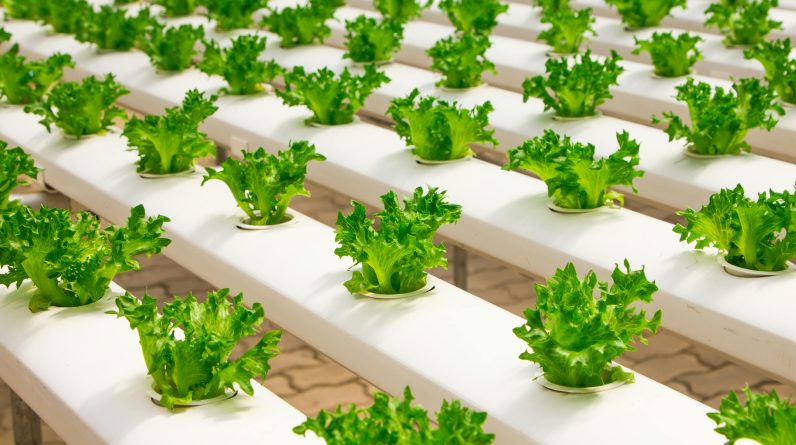
Imagine growing lush, green plants without soil, conserving water, and reducing pesticide use. Sounds like a dream, right? Well, with Hydroponic farming, this dream is becoming a reality. Hydroponic farming is a revolutionary technique that allows plants to thrive in nutrient-rich water solutions, eliminating the need for soil. Not only does this method save water and reduce chemical usage, but it also produces higher yields in less time. In this article, we will explore the fascinating world of hydroponic farming and discover why it is being hailed as the eco-friendly approach to growing.

What is Hydroponic Farming?
Hydroponic farming is a modern method of growing plants without the use of soil. Instead, plants are grown in a nutrient-rich water solution that provides all the necessary minerals and nutrients for their growth. This method utilizes various techniques and systems to create the ideal environment for plant cultivation.
Definition
Hydroponic farming, often referred to as soilless farming, is a technique where plants are grown in water-based solutions enriched with essential nutrients. By eliminating the need for soil, hydroponics allows for precise control over plant nutrition, water, and oxygen levels, resulting in higher yields and accelerated growth.
History of Hydroponics
The concept of hydroponics dates back to ancient civilizations, where early experiments with soilless gardening were conducted. The Hanging Gardens of Babylon, one of the Seven Wonders of the Ancient World, is believed to have utilized a form of hydroponics. However, modern hydroponics as we know it today began to emerge in the 19th century through scientific experiments and research. It gained popularity in the mid-20th century and has since evolved into an efficient and sustainable farming technique.
Components of a Hydroponic System
A hydroponic system consists of several key components that work together to provide the optimal growing conditions for plants. These components typically include a reservoir or tank to hold the nutrient solution, a pump to circulate the solution, a growing medium or structure to support the plants, and various monitoring devices to ensure proper nutrient levels, pH balance, and temperature.
Advantages of Hydroponic Farming
Hydroponic farming offers numerous advantages over traditional soil-based farming methods. These benefits have contributed to the growing popularity of hydroponics in agriculture.
Water Conservation
One of the significant advantages of hydroponic farming is its water efficiency. By delivering water directly to the plant roots, hydroponics reduces water waste associated with traditional irrigation systems. This method allows for precise control over water usage, resulting in water savings of up to 90% compared to conventional farming methods.
Minimized Soil Erosion
Since hydroponic farming does not rely on soil, there is no risk of soil erosion. Soil erosion can lead to nutrient depletion, decreased crop productivity, and environmental degradation. With hydroponics, the absence of soil eliminates the erosion problem, ensuring the long-term sustainability of agricultural practices.
No Pesticides or Herbicides
Another advantage of hydroponics is the ability to grow crops without the use of pesticides or herbicides. By eliminating the need for soil, the risk of soil-borne diseases and pests is significantly reduced. Additionally, the controlled environment of a hydroponic system minimizes the risk of pest infestations, making it possible to grow crops organically and without the use of harmful chemicals.
Maximized Crop Yield
Hydroponic farming allows for maximum crop yield due to its optimized plant nutrition system. By providing plants with precise amounts of essential nutrients, growers can achieve faster growth and higher yields compared to traditional farming. The controlled environment of hydroponic systems also minimizes competition for resources between plants, further enhancing crop productivity.
Year-Round Crop Production
One of the most exciting advantages of hydroponic farming is its ability to support year-round crop production. By controlling the growing conditions, such as temperature and lighting, hydroponics enables farmers to grow crops regardless of external seasonal variations. This consistent production can help ensure a steady food supply and reduce dependency on imports during off-seasons.
Types of Hydroponic Systems
Hydroponic farming utilizes various systems and techniques, each with its own unique advantages and characteristics. Different hydroponic systems are suited for specific crops, environments, and grower preferences.
Nutrient Film Technique (NFT)
The Nutrient Film Technique (NFT) is a popular hydroponic system where a thin film of nutrient solution flows over the roots of plants, providing them with a constant supply of water and nutrients. This system requires a slight slope so that the nutrient solution can flow down the channel, promoting oxygenation of the roots. NFT is ideal for growing leafy greens, herbs, and small plants like strawberries.
Deep Water Culture (DWC)
Deep Water Culture (DWC) is one of the simplest and most commonly used hydroponic systems. In a DWC system, plant roots are suspended in a nutrient solution with the assistance of floating platforms or net pots. Oxygen is supplied to the roots through air stones or diffusers, ensuring adequate aeration. DWC is suitable for a wide range of crops, including lettuce, herbs, and tomatoes.
Drip System
The drip system is a versatile hydroponic system where a regulated flow of nutrient solution is delivered to the base of each plant through a network of tubes and emitters. This system allows for precise control over the nutrient and water supply to each plant, making it highly efficient. Drip systems are commonly used for growing larger plants like tomatoes, cucumbers, and peppers.
Aeroponics
Aeroponics is an advanced hydroponic system that involves suspending plant roots in a misting chamber. Nutrient-rich water is sprayed onto the roots, providing them with both water and nutrients. This system maximizes oxygenation of the roots, resulting in faster growth and higher yields. Aeroponics is particularly suitable for growing plants with delicate roots, such as lettuce and herbs.
Ebb and Flow
The Ebb and Flow system, also known as the flood and drain system, involves flooding the growing area with nutrient solution and then allowing it to drain back into the reservoir. This periodic flooding and draining cycle ensures proper moisture levels and oxygenation of the roots. Ebb and Flow systems are versatile and can be used for various crops, including flowers, herbs, and vegetables.
Environmental Benefits of Hydroponic Farming
The environmental benefits of hydroponic farming make it an eco-friendly alternative to traditional agriculture practices. This sustainable farming method helps address several pressing environmental concerns.
Reduced Water Usage
Water scarcity is a pressing issue in many parts of the world, with traditional agriculture accounting for a significant portion of water consumption. Hydroponic farming, with its water-efficient techniques, offers a solution to reduce water usage in agriculture. By delivering water directly to the plant roots and recirculating it within the system, hydroponics minimizes water waste, ensuring that water resources are used more sustainably.
No Runoff Contamination
Unlike traditional farming, where excess water and chemical runoff can contaminate nearby water sources, hydroponics eliminates the risk of such contamination. Since hydroponic systems recycle and re-use water, the potential for chemical runoff is virtually eliminated. This significantly reduces the pollution of rivers, lakes, and groundwater, positively impacting the overall health of ecosystems.
Reduced Land Requirement
Another significant environmental benefit of hydroponic farming is its reduced land requirement. Conventional agriculture often requires vast expanses of land for crop cultivation, leading to deforestation and habitat loss. Hydroponic systems can be set up vertically, utilizing limited space efficiently. By maximizing crop yield per square meter, hydroponics minimizes the need for vast land areas, allowing for more land to be conserved.
Reduced Energy Consumption
Traditional farming methods often rely heavily on fossil fuels for machinery, transportation, and irrigation. Hydroponics, on the other hand, requires less energy input. With the controlled environments created by hydroponic systems, the need for heavy machinery and extensive irrigation is minimized. This reduction in energy consumption contributes to a lower carbon footprint and a more sustainable agricultural model.
Decreased Carbon Footprint
Hydroponic farming has the potential to significantly reduce the carbon footprint associated with agriculture. By minimizing the use of fossil fuels, conserving water resources, and reducing land requirements, hydroponics helps mitigate greenhouse gas emissions. Additionally, as hydroponics can be practiced closer to urban areas, the transportation distances for fresh produce can be greatly reduced, further reducing carbon emissions.
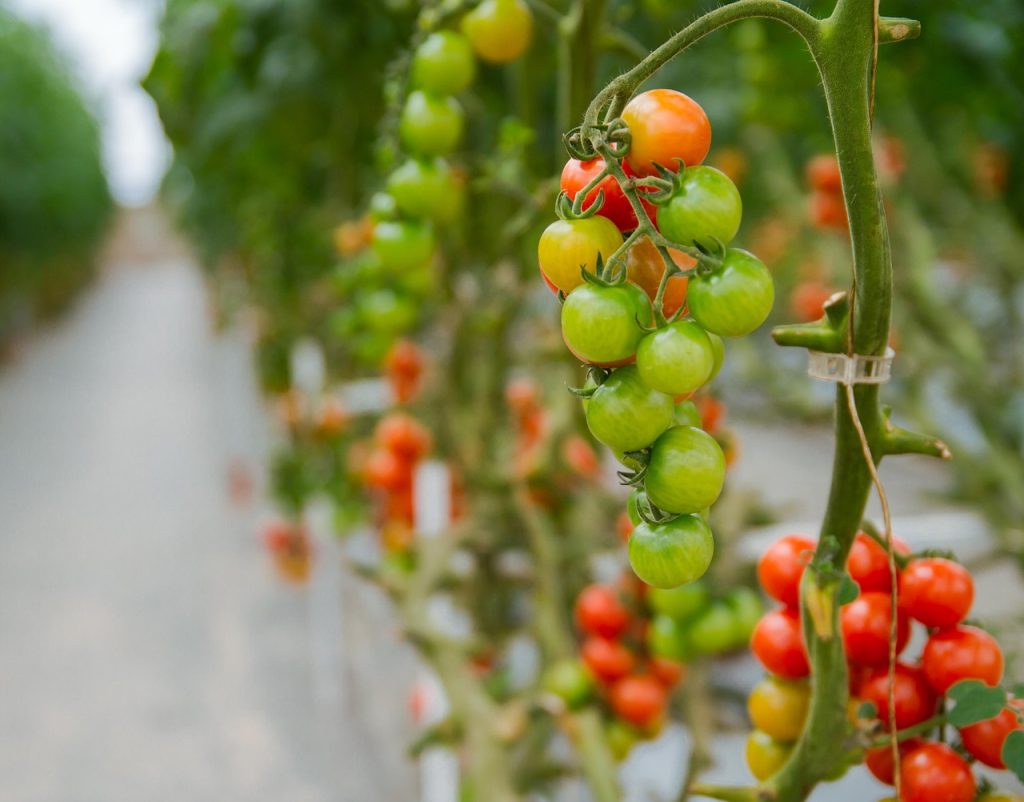
Economic Benefits of Hydroponic Farming
In addition to the environmental advantages, hydroponic farming offers numerous economic benefits that make it an attractive option for growers and investors alike.
Maximized Crop Yield
Hydroponics allows for maximized crop yield per unit of space compared to traditional farming. With precise control over nutrients, water, and other growing conditions, hydroponics provides an optimal environment for plants to thrive. Higher crop yields translate into increased profitability for farmers, making hydroponic farming an economically viable alternative.
Higher Quality Produce
The controlled environment and nutrient-rich water solutions of hydroponic systems contribute to the production of high-quality produce. Hydroponically grown fruits, vegetables, and herbs are often praised for their superior taste, texture, and nutritional content. The ability to provide consumers with fresh, high-quality produce year-round can lead to increased market demand and higher prices for hydroponic farmers.
Efficient Use of Space
Hydroponic systems allow for efficient use of space, particularly in urban areas where land is limited and expensive. By utilizing vertical farming techniques, hydroponic farms can maximize crop production per square meter. This efficient use of space enables farmers to cultivate a significant amount of produce in a relatively small footprint, making hydroponics a practical solution for urban agriculture.
Year-Round Crop Production
The ability to grow crops year-round is a significant economic advantage of hydroponic farming. In traditional farming, crop productivity is often limited by seasonal variations and climatic conditions. With hydroponics, growers can create and maintain the ideal growing conditions, allowing for continuous crop production throughout the year. This constant supply of fresh produce can facilitate long-term contracts with restaurants, grocery stores, and other buyers.
Reduced Transportation Costs
Hydroponic farms can be set up closer to urban centers, potentially reducing the need for long-distance transportation of produce. By eliminating the need to transport crops from distant rural areas, hydroponics can significantly reduce transportation costs for growers. This cost-saving benefit can help increase profitability and contribute to a more sustainable and localized food system.
Challenges and Limitations of Hydroponic Farming
While hydroponic farming offers many advantages, there are also several challenges and limitations that need to be addressed for its widespread adoption.
Initial Setup Cost
One of the primary challenges for aspiring hydroponic farmers is the initial setup cost. Hydroponic systems require various components, such as pumps, grow lights, sensors, and growing mediums, which can be quite expensive. Additionally, the setup of a controlled environment, including climate control systems, can further increase the overall investment required. However, with advancements in technology, the costs of hydroponic equipment and systems are gradually becoming more affordable.
Technical Expertise Requirement
Unlike traditional farming, hydroponic farming requires specialized knowledge and technical expertise. The understanding of plant nutrition, pH balance, water quality, and system maintenance is essential for successful hydroponic cultivation. Farmers need to invest time in learning the principles and practices of hydroponics or hire experienced professionals to manage the system effectively. This technical know-how can be a barrier for some individuals or communities interested in adopting hydroponic farming.
Disease and Pest Management
While hydroponic farming reduces the risk of soil-borne pests and diseases, it does not eliminate the possibility entirely. The controlled environment of a hydroponic system can still be susceptible to pests such as aphids or diseases such as powdery mildew. It is crucial for hydroponic farmers to have proper monitoring systems in place to identify and address any pest or disease outbreaks promptly. Integrated pest management techniques and biological controls are commonly used to mitigate these risks.
Potential Equipment Failures
Hydroponic systems rely on various equipment and technologies, including pumps, timers, sensors, and lighting systems. Like any complex machinery, there is a risk of equipment failures or malfunctions. Power outages or mechanical issues can disrupt the nutrient supply, lighting schedules, or environmental control, which can have a detrimental impact on plant health and crop yields if not addressed promptly. Regular maintenance and backup systems should be implemented to minimize the potential risks associated with equipment failures.
Dependency on Technological Infrastructure
Hydroponic farming heavily relies on technological infrastructure for its efficient operation. Precision control systems, climate control equipment, and monitoring devices are essential for maintaining stable growing conditions. The dependency on these technologies can be a limitation in regions with limited access to reliable electricity, internet connectivity, or skilled technicians. It is crucial for hydroponic farmers to consider the availability and feasibility of such infrastructure before undertaking large-scale operations.
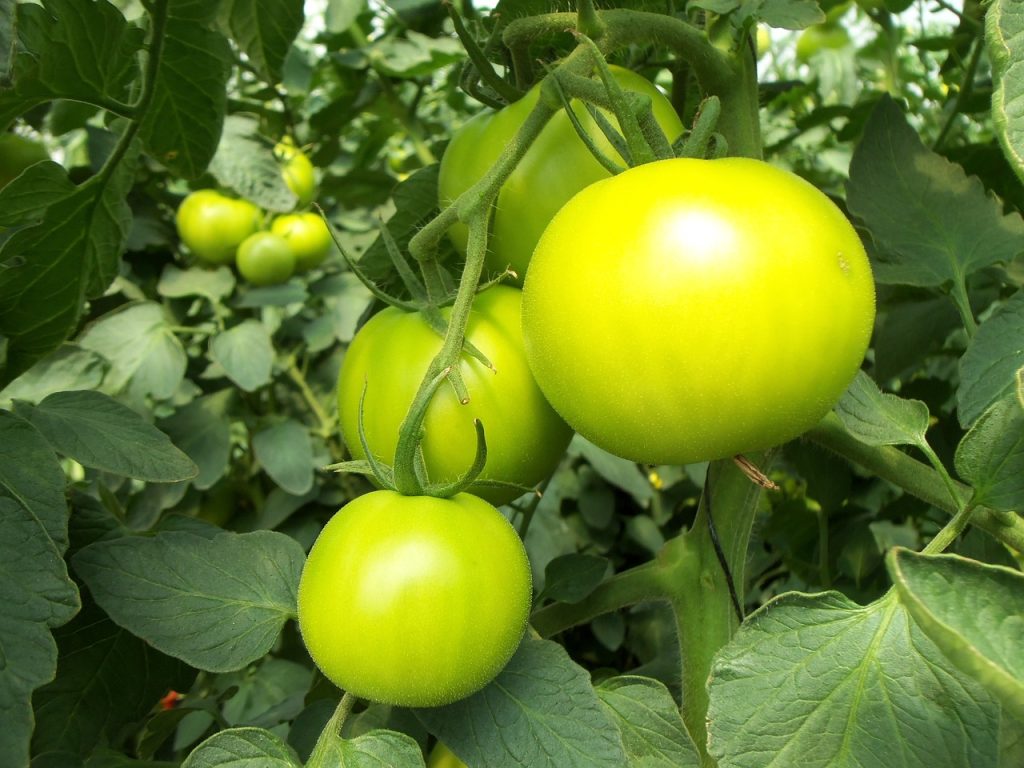
Applications of Hydroponic Farming
Hydroponic farming has proven to be a versatile and adaptable technique, finding applications in various domains beyond traditional agriculture.
Urban Agriculture
Urban areas often face limited access to fresh produce due to space constraints and distance from rural agricultural regions. Hydroponic farming provides a solution to this problem by enabling food production within urban centers. Vertical farming systems and rooftop gardens utilizing hydroponics allow for the cultivation of crops in vertically stacked tiers or on unused urban spaces, ensuring a sustainable supply of fresh produce to urban populations.
Commercial Greenhouses
Commercial greenhouses benefit greatly from the use of hydroponic systems. The controlled environment and efficient use of space make hydroponics an ideal option for large-scale and year-round production. Commercial hydroponic greenhouses can cultivate a wide range of crops, from leafy greens and herbs to vine crops and flowers. The controlled conditions inside greenhouses also provide protection from adverse weather conditions and pests, ensuring reliable production and higher crop quality.
Food Security in Remote Areas
Hydroponic farming offers a feasible solution for remote areas that face challenges in traditional agriculture due to limited access to fertile land, water scarcity, or extreme climates. By implementing hydroponics, communities in remote regions can grow fresh produce locally, reducing their reliance on imported food and improving food security. The controlled nature of hydroponic systems allows crops to be grown even in challenging environments, providing a consistent supply of nutritious food to remote populations.
Research and Education
Hydroponics plays a crucial role in research and education within the agricultural field. It provides a controlled and repeatable environment for conducting experiments and studying plant physiology, nutrient uptake, and crop growth. Hydroponic systems are often used in universities, research institutions, and agricultural training centers to educate students and researchers on innovative farming techniques, sustainable practices, and the importance of efficient resource utilization.
Aquaponics Systems
Aquaponics combines hydroponic farming with aquaculture, creating a symbiotic ecosystem where fish and plants thrive together. In an aquaponic system, fish waste provides the essential nutrients for plant growth, while plants naturally filter and purify the water for the fish. This mutually beneficial relationship allows for the sustainable production of both fish and crops. Aquaponic systems are gaining popularity as a holistic and environmentally friendly approach to food production.
Future Potential of Hydroponic Farming
As technology continues to advance and sustainable farming practices gain more recognition, the future of hydroponic farming looks promising. Several exciting developments and potential applications are being explored to further enhance hydroponics.
Food Production in Space
With ambitions of future space colonization and long-duration space missions, hydroponics holds great potential for food production in space. The controlled environment and efficient resource utilization of hydroponics make it an ideal choice for growing food in the challenging conditions of space habitats and spacecraft. NASA and other space agencies have conducted experiments on the International Space Station to explore the viability of hydroponics for sustaining astronauts on long space missions.
Vertical Farming
Vertical farming, utilizing hydroponic systems, is gaining traction as a solution to feed the growing global population while minimizing the use of land and resources. By stacking plants in vertically oriented structures, vertical farming maximizes space utilization and allows for year-round crop production. The controlled environment of vertical farms, combined with hydroponics, provides optimal growing conditions while minimizing the impact on the surrounding environment.
Integration with Renewable Energy
Hydroponic farming can be integrated with renewable energy sources to create sustainable and eco-friendly farming systems. Solar panels, wind turbines, or hydroelectric power can be used to generate the energy required for lighting, climate control, and equipment operation in hydroponic farms. By combining hydroponics with renewable energy, growers can reduce their dependence on fossil fuels, further minimizing the carbon footprint of agricultural operations.
Smart Hydroponic Systems
Advancements in automation, robotics, and artificial intelligence (AI) have the potential to revolutionize hydroponic farming. Smart hydroponic systems can constantly monitor and adjust various parameters such as nutrient levels, pH balance, temperature, and humidity, optimizing plant growth and resource utilization. AI-powered algorithms can analyze collected data and provide real-time recommendations to farmers, enabling them to make informed decisions for maximizing crop yields and efficiency.
Sustainable Food Systems
The future of hydroponic farming is closely linked with the goal of establishing sustainable food systems. As the global population continues to grow, there is an increasing need to produce more food while minimizing the environmental impact of agriculture. Hydroponic farming, with its resource-efficient techniques and controlled environments, offers a viable solution to meet these challenges. By providing a sustainable and reliable method of crop production, hydroponics can contribute to building resilient and environmentally conscious food systems worldwide.
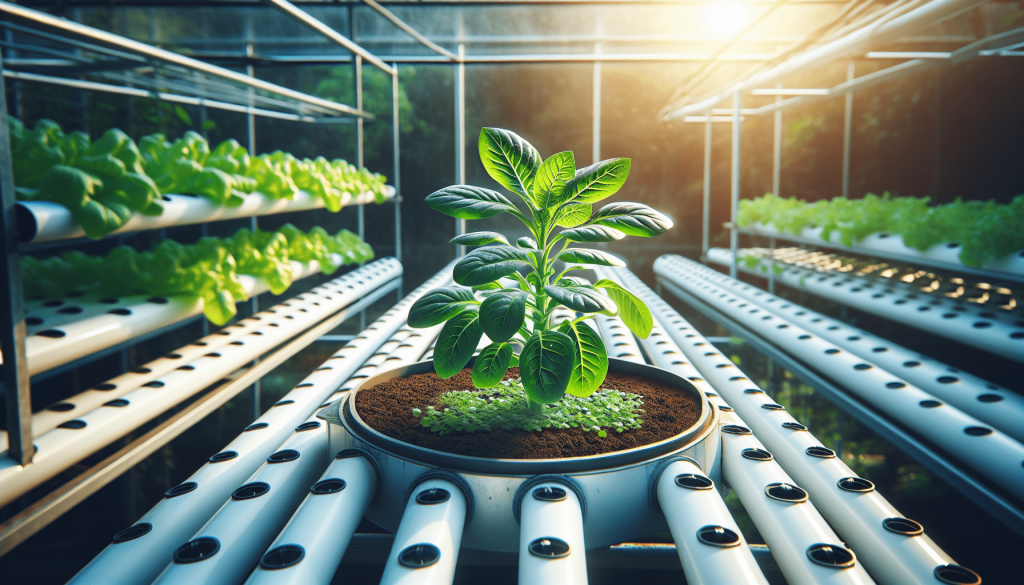
Tips for Setting up a Hydroponic Farm
If you are considering setting up your own hydroponic farm, here are some essential tips to get you started:
Choose the Right Location
Selecting the right location is crucial for the success of your hydroponic farm. Ensure adequate access to water and electricity, as well as a suitable climate for the crops you plan to grow. Consider factors such as available space, sunlight exposure, and proximity to markets or distribution channels.
Select the Appropriate Hydroponic System
The choice of hydroponic system will depend on your crops, available space, and budget. Research different hydroponic systems such as NFT, DWC, drip systems, aeroponics, and ebb and flow, and choose the system that best suits your requirements.
Ensure Adequate Lighting and Temperature Control
Proper lighting and temperature control are essential for successful hydroponic farming. Ensure that your plants receive the appropriate amount and quality of light for photosynthesis. Consider installing LED grow lights for energy-efficient and effective lighting. Monitor and manage temperature and humidity levels to create the optimal growing conditions for your crops.
Maintain Proper Nutrient Balance
The nutrient solution is the lifeline of your hydroponic system. Regularly test and monitor the nutrient levels, pH balance, and electrical conductivity of the solution. Adjust the nutrient concentrations as needed to ensure your plants receive the appropriate balance of macro and micronutrients.
Regularly Monitor and Adjust pH Levels
pH plays a critical role in nutrient absorption and plant health. Monitor the pH level of your nutrient solution regularly using pH meters or test kits. Adjust the pH level as needed using pH up or pH down solutions to maintain the optimal pH range for your crops.
Conclusion
Hydroponic farming offers a sustainable solution to the challenges faced by traditional agriculture. Through its water efficiency, minimized soil erosion, and absence of pesticides, hydroponics provides an eco-friendly approach to growing crops. With advantages such as maximized crop yield, year-round production, and reduced transportation costs, hydroponic farming benefits both the environment and the economy. Despite certain challenges and limitations, the future potential of hydroponics is promising, with applications ranging from urban agriculture to space food production. By embracing hydroponic farming and incorporating innovative technologies, we can pave the way for a more sustainable and efficient food system that meets the needs of a growing global population.
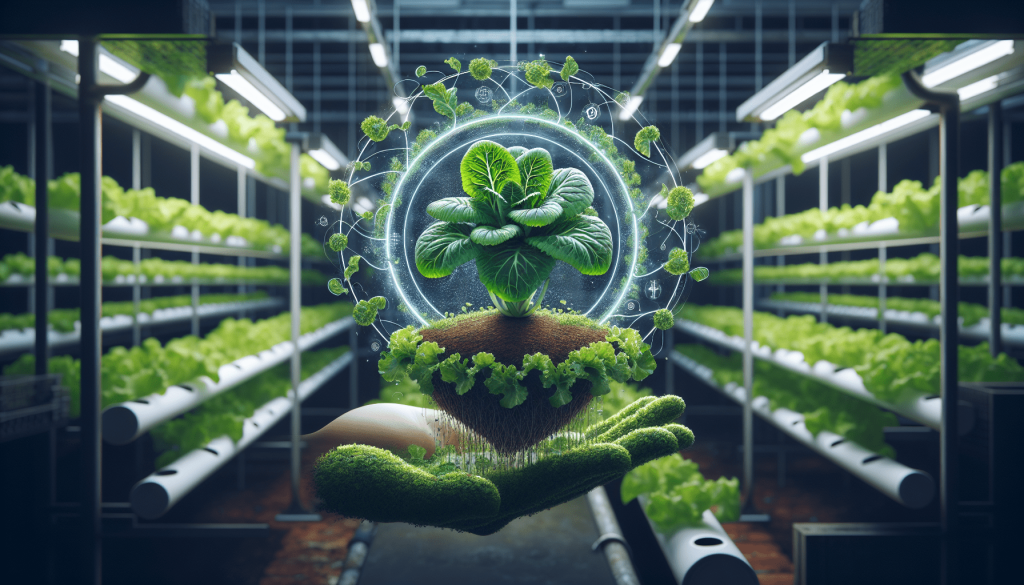
Related Content
- 10 Effective DIY Hydroponic System Tips for 2025: The Ultimate Guide
- Achieve Higher Yields with Hydroponic Techniques
- 10 Effective best hydroponic vegetables to Grow in 2025: Ultimate Guide
- What Makes Seeds Fail To Germinate?
- The Ultimate Guide to Hydroponic Lighting Setup 2025: 7 Effective Strategies for Best Results




